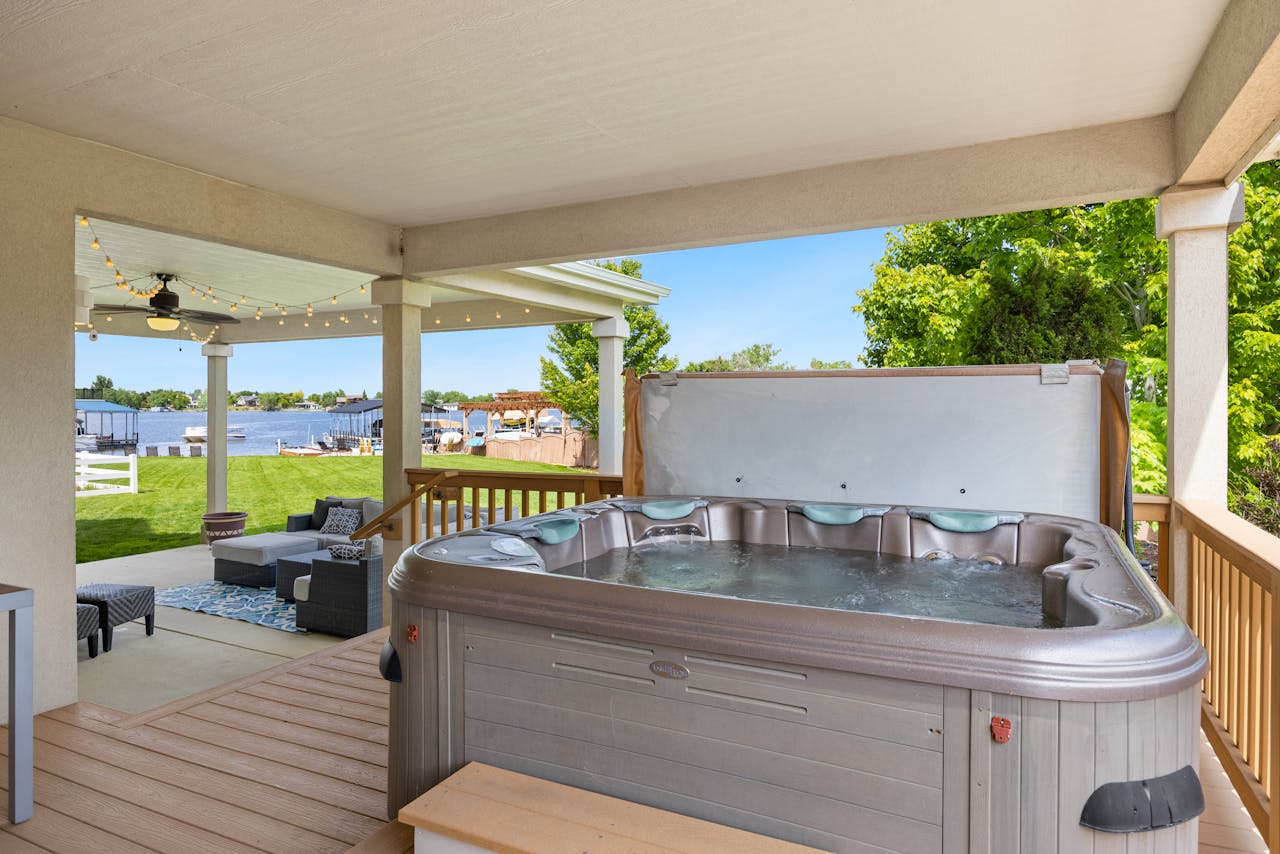What Is a Portable Hot Tub and Are They Worth It?
A traditional hot tub can be a big investment, with high-quality models costing as much as $35,000+. If that’s not in your budget, you may be excited to discover a cheaper option that fits the bill without the need for permanent installation. This guide will highlight the pros and cons of a portable hot tub and help you determine the best solution for your needs.
What is a portable hot tub?
Portable hot tubs are budget-friendly alternatives to built-in spa systems, offering greater versatility for renters and homeowners alike. Let’s explore the basics:
Key features of the best portable hot tubs
A high-quality portable hot tub should offer:

- Easy setup: Many plug into a standard electrical outlet, can be inflated or assembled in minutes, and filled with a standard garden hose.
- Adequate jets: Look for hydrotherapy jets for muscle relief.
- Durable build quality: PVC, tri-layered materials, rotomolded plastic, and synthetic resin help them stand up to sun damage and other elements.
- Energy efficiency: Insulated covers, locking lids, and thick spa walls retain heat. Some models have programmable timers for better energy-saving potential.
- User-friendly control panel: Digital controls make it easy to adjust the temperature, jets, and filtration system.
- Seating and capacity: Models range from 2-person to 6+. Some soft-sided tubs don’t have seats.
Are there different types of portable hot tubs?
Yes, all portable hot tubs fall into one of two categories:
Soft-sided hot tubs
Inflatable hot tubs are great for folks who want an inexpensive spa setup that’s easy to put together, break down, and relocate. Lightweight and portable, this hot tub option features a soft structure and gentle bubbles, ideal for soaking and relaxing.
Hard-sided hot tubs
Rigid, hard-sided tubs may require a little more hands-on assembly time, sometimes demanding professional help. They aren’t as easy to disassemble or move once they’re filled. However, they can offer more powerful jets and robust durability than inflatable solutions.
What are the drawbacks of portable hot tubs?
Thanks to limited durability, portable hot tub models have shorter lifespans than traditional tubs, lasting between two and 15 years. Some may take 24 hours to heat water to the appropriate temperature. Finally, cheap models with poor insulation may actually use more energy than permanent spas.
Related: Jacuzzi vs Hot Tub: What’s The Difference?
What are the benefits of a portable hot tub?
When it comes to choosing an at-home spa solution, you have choices! Here are some of the advantages a portable hot tub offers over traditional hot tubs and swim spas:
Flexible solution
You can install a portable hot tub anywhere there’s level ground, including your deck, patio, backyard, or even indoors. When you’re ready for a change, it’s easy to relocate – especially if you opt for an inflatable model.
Easy installation
Many designs are plug-and-play, perfect for an easy DIY project. If you’re looking for simplicity, go with an inflatable.
Affordable
Compared to built-in styles, portable hot tubs are significantly less expensive. Hard-sided tubs start at around $1,500, while you may be able to find an inflatable option for less than $500.
Year-round use
While some inflatable hot tubs are less efficient during the cold weather, they’re still designed to withstand all seasons. If the temperature drops drastically in winter, opt for a hard-sided design with robust insulation.
Low maintenance
Maintaining clean, clear water and high water quality requires fewer chemicals, thanks to lower water volume. However, it’s still important to have a water treatment system in place to ensure your safety. If you have hard water in your area, you can purchase pre-made softening kits to balance your swimming space.
Related: Your Complete Guide to Hot Tub Maintenance
What to consider when shopping for a portable hot tub
Ready to start shopping? Here are a few tips to help you select the right portable hot tub for you:
Size and seating capability
The number of people using your hot tub – and the square footage of your installation space – will determine the size of your ideal spa. Remember to look at the interior and exterior dimensions, as a “4-person” tub may feel cramped at maximum capacity.
Quality of materials
Inflatable models should be made of multi-layered PVC or reinforced vinyl, while hard-sided options may consist of rotomolded plastic or synthetic resin.
Temperature control and filtration
A reliable heater should maintain your water temperature at around 104 degrees, even in cold weather. Many portable hot tubs feature replaceable filter cartridges that run on a timer to eliminate impurities.
Energy efficiency
Great portable hot tubs should include thick, well-insulated walls and floors, as well as a fitted, insulated cover. Look for models with energy-efficient heaters and low energy consumption ratings.
Affordability
It’s possible to find portable hot tubs in just about any budget. Make a list of your must-have features, then set a maximum price point to shop responsibly.
Related: Summer Pool Accessories You Need This Season
Shop the best pool products for your backyard oasis at GPS Pools!
Grab your bathing suits and get ready to relax! GPS Pools can help you make the most of your backyard. Whether you’re looking for deck remodeling services or someone to help you care for your pool and spa, we’re here to help. Reach out today to learn more!

